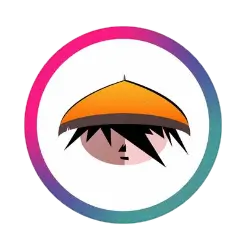Three tropical cyclones are seen near the Philippines in a stunning image from a Japanese state-of-the-art satellite that went online Tuesday.
Tropical Storm Egay is on the left, Typhoon Falcon is center, and Typhoon Nangka is on the right in the Himawari-8 satellite image from the Japan Meteorological Agency.
The Philippines is partly covered by clouds on the left near Tropical Storm Egay, which whipped Northern Luzon over the weekend.
Typhoon Falcon, which entered the Philippine area of responsibility Tuesday, is not expected to make landfall in the Philippines. However, it will enhance the habagat, or southwest monsoon, and bring more rains to the country.
Typhoon Nangka may peak at Category 5 strength, but it is also not expected to make landfall in the Philippines.
STATE OF THE ART HIMAWARI-8
Japan’s Himawari-8 is the world’s first geostationary weather satellite that can take high-resolution images in full color.
It went online Tuesday to help scientists track and predict typhoon movements and heavy rainfall.
The Himawari-8, which is located in a geostationary orbit about 36,000 km above the equator, can shoot 16 different kinds of images. Its closest predecessor, the Himawari-7, produces only five, the Meteorological Agency said.
The images are also higher resolution, allowing observation of an area as small as 500 sq. meters. The new satellite generates about 50 times the volume of data compared with the output of Himawari-7, the agency said.
The Himawari-8 can take images of the entire planet — within view of its geostationary position — every 10 minutes, compared with every one hour for the previous model, and can cover all of Japan in 2.5 minute intervals, compared with 30 minutes previously, the weather agency said.
Images taken during a test run Monday clearly showed the three cyclones south of the Japanese archipelago.
Observation data obtained by the Himawari-8 is downloaded at an antenna site in Saitama Prefecture and transferred to a data center in Itabashi Ward, Tokyo, which will then process it and send it to the agency for weather forecasts and other uses.
The entire cost of the project is about ¥85 billion, according to the agency.
The Himawari-8 was launched in October to replace the Himawari-7, which was launched in February 2006 and remains operational. The older bird will now serve as a backup until the Himawari-9 is launched in fiscal 2016.
“Himawari” means “sunflower” in Japanese. – with a report from Kyodo News
















![[LOOK] FHM Sexiest List: Jennylyn Mercado #1, Kathryn Bernardo #2](https://i0.wp.com/all-about-juan.info/wp-content/uploads/2016/01/FHM-Sexiest-List.jpg?fit=720%2C1115&ssl=1&resize=200%2C200)



![[WATCH] Disturbing video of a P.E. class gone viral!](https://i0.wp.com/all-about-juan.info/wp-content/uploads/2015/09/disturbing-PE-class-video.jpg?fit=843%2C391&ssl=1&resize=200%2C200)
![[WATCH] Compilation of Magandang Gabi Bayan's Halloween Special Episodes!](https://i0.wp.com/all-about-juan.info/wp-content/uploads/2015/10/magandang-gabi-bayan-halloween-scpecial.jpg?fit=687%2C475&ssl=1&resize=200%2C200)
![[WATCH] Behind-the-scenes video clip of Dennis Trillo in swimming trunks makes everyone going CRAZY!](https://i0.wp.com/all-about-juan.info/wp-content/uploads/2016/10/Behind-the-scenes-video-clip-of-Dennis-Trillo-in-swimming-trunks.jpg?fit=600%2C450&ssl=1&resize=200%2C200)








